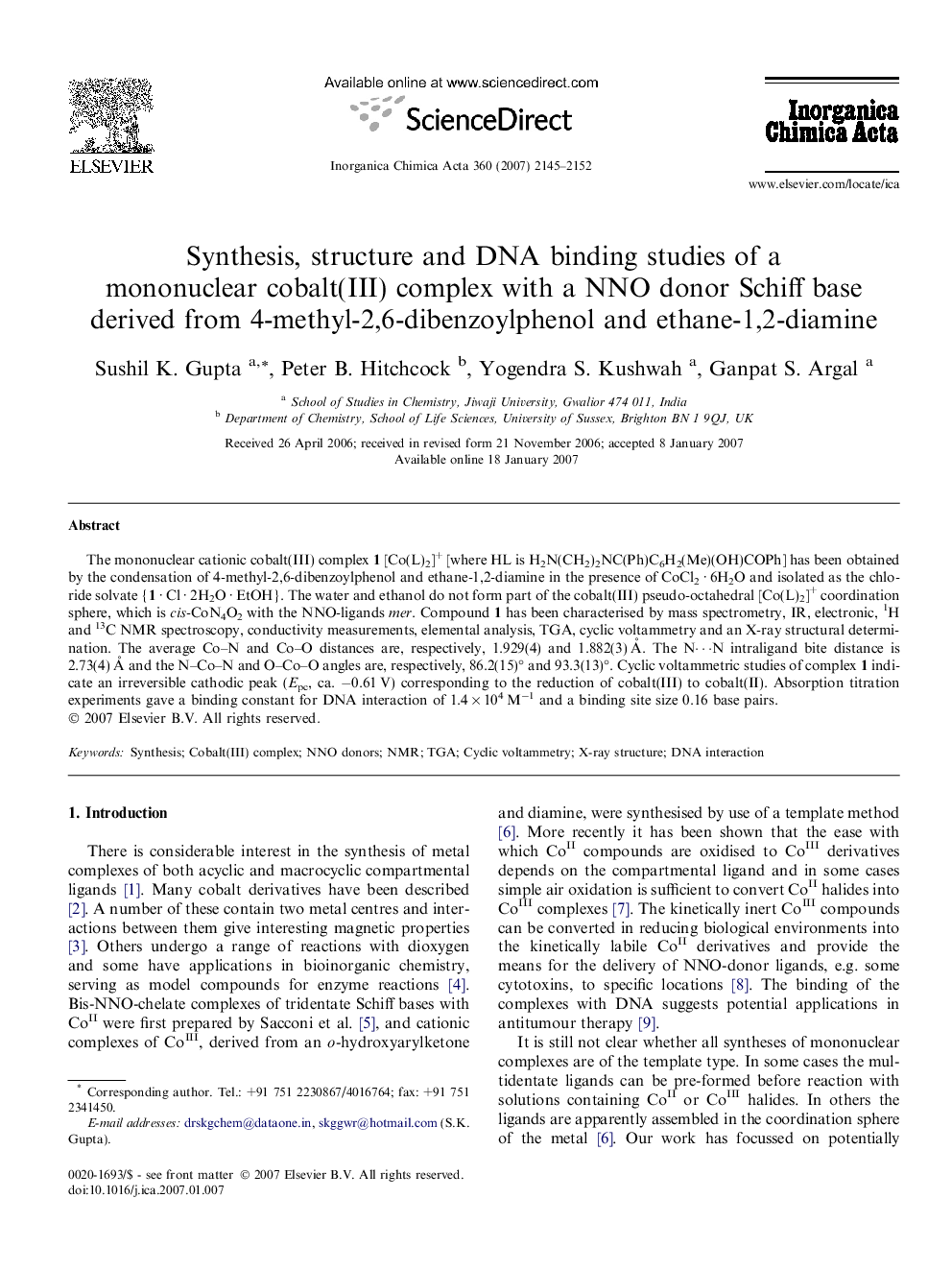| Article ID | Journal | Published Year | Pages | File Type |
|---|---|---|---|---|
| 1310478 | Inorganica Chimica Acta | 2007 | 8 Pages |
The mononuclear cationic cobalt(III) complex 1 [Co(L)2]+ [where HL is H2N(CH2)2NC(Ph)C6H2(Me)(OH)COPh] has been obtained by the condensation of 4-methyl-2,6-dibenzoylphenol and ethane-1,2-diamine in the presence of CoCl2 · 6H2O and isolated as the chloride solvate {1 · Cl · 2H2O · EtOH}. The water and ethanol do not form part of the cobalt(III) pseudo-octahedral [Co(L)2]+ coordination sphere, which is cis-CoN4O2 with the NNO-ligands mer. Compound 1 has been characterised by mass spectrometry, IR, electronic, 1H and 13C NMR spectroscopy, conductivity measurements, elemental analysis, TGA, cyclic voltammetry and an X-ray structural determination. The average Co–N and Co–O distances are, respectively, 1.929(4) and 1.882(3) Å. The N⋯N intraligand bite distance is 2.73(4) Å and the N–Co–N and O–Co–O angles are, respectively, 86.2(15)° and 93.3(13)°. Cyclic voltammetric studies of complex 1 indicate an irreversible cathodic peak (Epc, ca. −0.61 V) corresponding to the reduction of cobalt(III) to cobalt(II). Absorption titration experiments gave a binding constant for DNA interaction of 1.4 × 104 M−1 and a binding site size 0.16 base pairs.
Graphical abstractThe reaction of cobalt(II) with the unsymmetrical Schiff’s base, HL (generated in situ) gives a diamagnetic mononuclear cobalt(III) complex, which is cis-CoN4O2 with the NNO-ligands mer. The NMR experiments indicate that rotation of the phenyl ring adjacent to nitrogen is restricted in solution as well as in the solid state. Absorption titration and cyclic voltammetric studies indicate that the complex binds to DNA with moderate strength.Figure optionsDownload full-size imageDownload as PowerPoint slide
